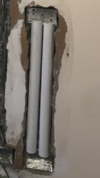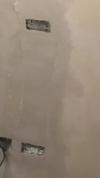I would be inclined to use two or even three of these instead with a double box top and bottom
 www.screwfix.com
as the semi round is internally much smaller
www.screwfix.com
as the semi round is internally much smaller
Error 410 | Screwfix
Thousands of products at low trade prices | FREE next day delivery available | 30 day money back guarantee on all orders.





